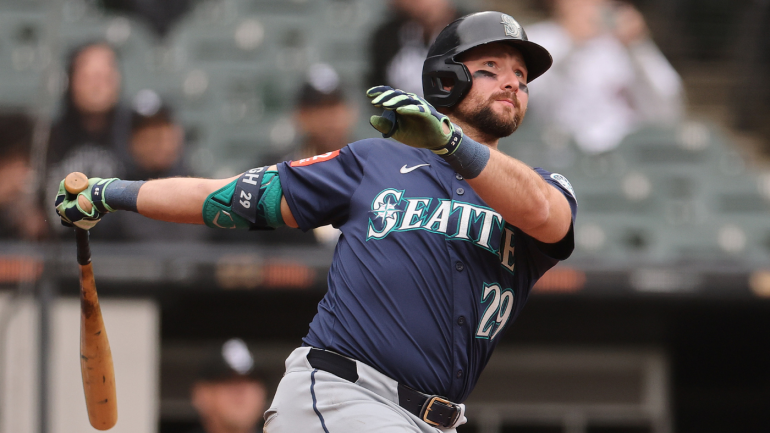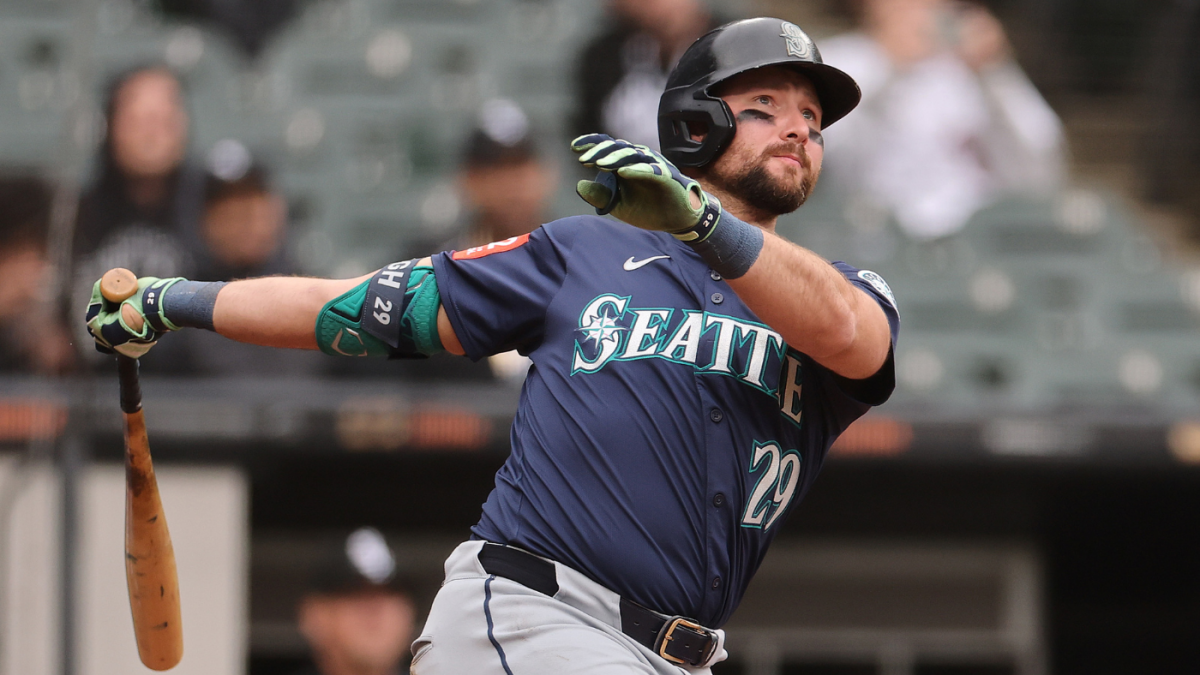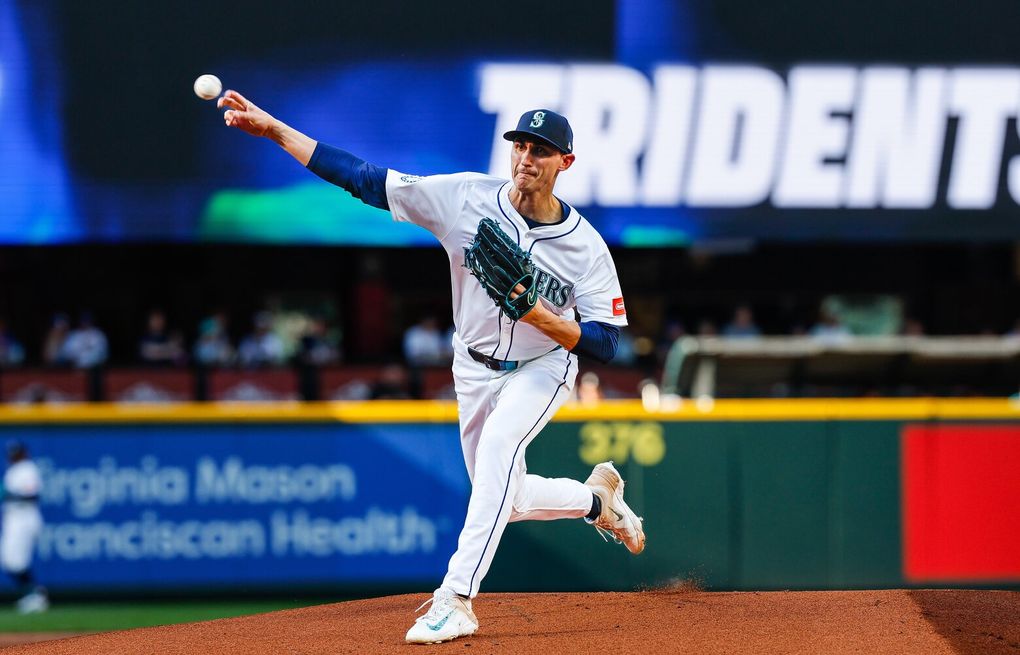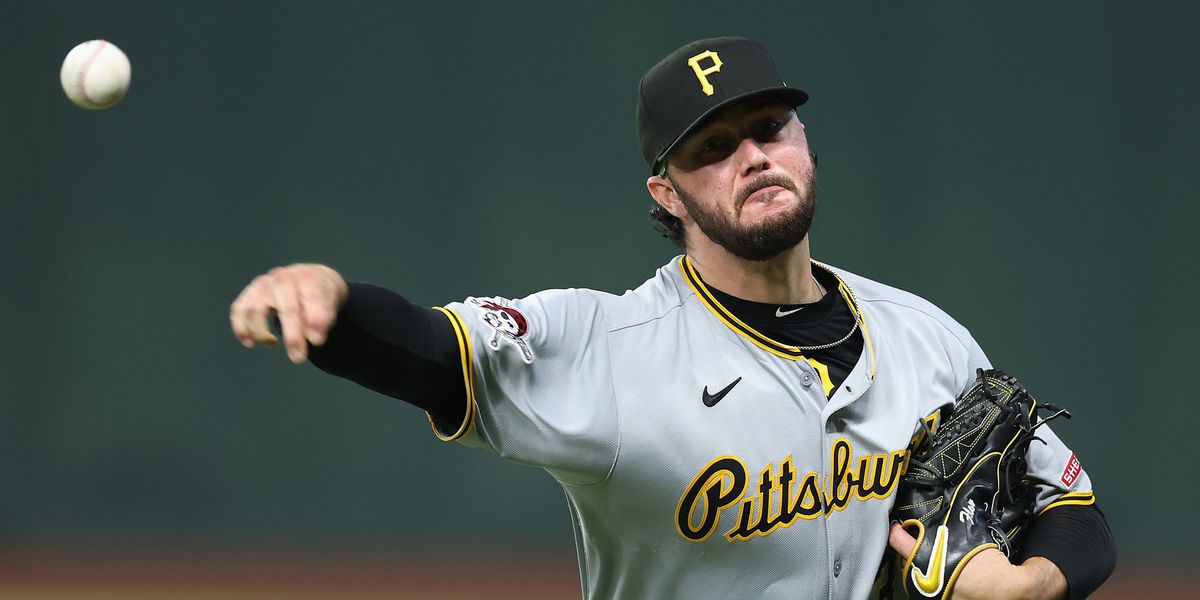
We’re past Memorial Day and almost into June, which in the realm of the Major League Baseball calendar means any “on pace to” construct isn’t as ridiculous as it would’ve been mere weeks ago. That’s to say, sample sizes are big enough to matter, and trends are taking on meaning. One such first-half phenomenon is the excellence of Seattle Mariners catcher Cal Raleigh.
To be sure, Raleigh’s 2025 campaign to date isn’t out of nowhere. The 28-year-old catcher won a Gold Glove last season, and he averaged 30 homers per year from 2022 through 2024 — standout power production, especially for a catcher who plays his home games at T-Mobile Park, the most extreme run-suppressing park in MLB. This season, though, he’s taken his plate production — and, by extension, overall value — to new heights. Raleigh’s done so to the extent that, should trends hold, he’ll merit serious consideration for the American League MVP award.
To be sure, said award would go to New York Yankees slugger Aaron Judge in unanimous fashion if the season ended today, but Raleigh’s performance has put him on that particular radar screen (Caesars puts Judge’s odds at -8000, with Raleigh in third at +7500). If Judge comes back to earth or, perish the thought, gets injured and Raleigh maintains his present clip, then who knows. He could become the first Mariner to win the MVP award since Ichiro Suzuki in 2001 and the first catcher to win MVP since Buster Posey of the San Francisco Giants in 2012.
First, here’s where Raleigh stands among American League position players in Wins Above Replacement (WAR), which is the best public-facing metric that attempts to capture the value of a player’s full contributions (i.e., hitting, base-running, and defense):
Again, Judge lords over all his surveys, but Raleigh is right there in the jumble behind him. This puts Raleigh on pace for a full-season WAR of 8.1, which is very much in MVP territory. It also puts him in rarified air when it comes to the best catcher seasons of all time. Here’s the list of a highest single-season WAR totals by a catcher since 1900 (among players who spent at least 75% of their games played at catcher during the season of note):
|
Catcher |
Year |
WAR |
|
Mike Piazza, Dodgers |
1997 |
8.7 |
|
T – Johnny Bench, Reds |
1972 |
8.6 |
|
T – Gary Carter, Expos |
1982 |
8.6 |
|
Johnny Bench, Reds |
1974 |
7.9 |
|
2009 |
7.8 |
Just to emphasize the implications that are plainly before your very eyes, yes, Raleigh is on target to author just the fourth 8-WAR season by a primary catcher in all of MLB history. A slight uptick in value over the remainder of the season could give Raleigh the highest single-season WAR ever for a catcher.
While Raleigh’s game contains multitudes, it’s his production with the bat that’s putting him in this position. At this writing, Raleigh in 2025 is slashing .258/.372/.603 with 19 home runs and 34 unintentional walks. Those 19 homers lead the AL (only Shohei Ohtani, with 20, has more in MLB right now), and Raleigh’s OPS+ of 176 – which means his park-adjusted OPS is a whopping 76 percent better than the league-average mark – ranks third in the AL. As well, the switch-hitting Raleigh has, both in 2025 and for his career, shown very balanced platoon splits.
Those are “All-Star first baseman” numbers at the plate, but Raleigh, of course, is not a first baseman. He’s a catcher, which is the most premium defensive position of all. As such, the bar for offensive excellence is much lower for players who also man catcher on an almost every-day basis. Speaking of which, Raleigh’s production looks even more special when you compare it to his positional peers. The average catcher this season has a slash line of .245/.317/.397, and of course those numbers would be even lower if you removed Raleigh’s outputs from the mix.
It’s also worth noting that Raleigh has backed up this elite production at the level of the batted ball. He blends elite bat speed and elite exit velocities, and he also boasts a barrel rate – or the percentage of batted balls that leave the bat at the ideal combination of exit velocity and launch angle – that’s in the 99th percentile among MLB hitters. That’s in addition to his excellent walk rate and above-average knack for laying off pitches outside the strike zone.
Specific to any eventual MVP discussion is the fact that Raleigh has also been pretty darn clutch in 2025. Overall, Raleigh this season has an OPS of .975 overall. However, that figure rises to 1.204 in “late and close” game situations this season. When the score is tied, he has an OPS of 1.023, and it’s 1.072 when the score is within one run. In game situations classified as high-leverage – meaning, basically, clutch spots – Raleigh’s OPS is a lofty 1.289. You get the idea. Clutch performance isn’t really any kind of projectable skill beyond a hitter’s ability to produce in all situations, but it’s relevant in a backward-looking assessment of overall value. That applies to the MVP race.
Durability? Raleigh definitely checks that box. Thus far, he’s played in every Mariner game. As well, he right now ranks fifth in the majors with 369 2/3 defensive innings behind the plate. As long as we’re piling on, let’s also note that Raleigh is five for six in stolen bases, and he’s hit into just two double plays all season.
Now let’s circle back to Raleigh’s WAR tally established above. Defense is, as noted, a component of WAR. The Baseball-Reference version of WAR, which we’ve been using in this present discussion, uses Defensive Runs Saved (DRS) in its calculations. DRS gives Raleigh a minus-1 figure for this season, which is at odds with the rest of his career and also at odds with Statcast, which ranks Raleigh seventh out of 35 qualifying catchers in Fielding Run Value. All of this is to say that WAR may be underselling Raleigh’s defensive worth, and that could course correct in the coming weeks and months.
Raleigh’s broad-based, all-encompassing importance to the Mariners as they angle to win the AL West can’t be understated. Simply put, he’s been one of the best players in baseball this season, and he figures to continue being just that. Assuming he does keep it up, we might wind up asking not just whether Raleigh is the AL MVP for 2025 but also whether he’s put together one of the greatest catcher seasons ever glimpsed.


